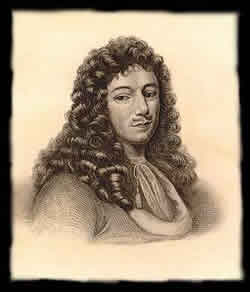Common menu bar links
Jean Talon: 1625-1694
Archived Content
Information identified as archived is provided for reference, research or recordkeeping purposes. It is not subject to the Government of Canada Web Standards and has not been altered or updated since it was archived. Please contact us to request a format other than those available.
As a result of the discontinuation of E-STAT, some of the links to the tables available in the publication 98-187-X Introduction to Censuses of Canada, 1665-1871 were broken. The tables can be requested via the Statistics Canada’s Data Liberation Initiative (http://www.statcan.gc.ca/eng/dli/dli). For the convenience of users, the tables are also available on the Queen’s University website: (http://library.queensu.ca/data/census-1665-1871). The website is in English as Queen’s University is not subject to the Official Languages Act.

Talon.
Théophile Hamel.
Musée de la civilisation, dépôt du Séminaire
de Québec,
Nº 1993.16425.
©Musée
de la civilisation, 1998
Canada’s first official statistician was Jean Talon, born in 1625 in Champagne, France. Talon arrived in North America in 1665 on a mission from King Louis XIV and his finance minister, Jean-Baptiste Colbert. France had taken back control of the colony from the private Company of One Hundred Associates in 1663 and Louis now wanted to measure the progress made in his colony.
As Intendant of Justice, Police, and Finance, Talon’s tasks were to stimulate the economic expansion of New France, increase the colony’s self-sufficiency and bring order to its financial administration. He was a man of enthusiasm and vision, and although he ranked below the Governor, he soon became the real manager of the colony. Talon served two terms: from 1665 to 1668, then from 1670 to 1672.
On his arrival in the colony, Talon faced challenges. Scurvy, smallpox, and other diseases were killing many European settlers. Confrontations were common between European settlers and Aboriginal Peoples, some of whom saw the newcomers as intruders. And the harsh climate could make even basic survival a struggle. Yet during Talon’s time in the colony, the population of New France climbed from 3,200 to 7,600.
North America's first census
Talon began his administrative appointment by taking stock of the colony. This included a systematic census in the winter of 1665-66.
Talon conducted his census on the de jure principale – that is, counting people where they normally reside. And he did much of the enumeration himself, going door-to-door. Talon’s census recorded everyone in the colony by name and included age, occupation, marital status, and relationship to the head of the family in which they lived. The census also measured the wealth of industry and agriculture, the value of local lumber and mineral resources, and the number of domestic animals, seigneuries, government buildings, and churches.
The census enumerated 3,215 inhabitants of European descent – 2,034 men and 1,181 women. Among these were 3 notaries, 3 schoolmasters, 3 locksmiths, 4 bailiffs, 5 surgeons, 5 bakers, 8 barrel makers, 9 millers, 18 merchants, 27 joiners, and 36 carpenters. The colony consisted of 3 major settlements, inhabited by 528 families. Quebec had a population of more than 2,100 people, Montreal had 635, and Trois-Rivieres had 455.
Talon puts the census to work
After collecting his statistics, Talon put them to work. He was responsible for everything from taxes to health , from bridge building to chimney sweeping, and his influence touched every facet of government, and of the day-to-day lives of colonists. He used knowledge gained from the census to develop the colony in many directions.
His figures showed that men outnumbered women nearly two to one in the male-dominated fur-trading and missionary outpost. Talon consequently arranged for young single women to come from France. From 1665 to 1673, 900 "filles du roi" arrived at Quebec. Talon imposed penalties on bachelors and rewarded early marriage and large families. Discussing the results of his efforts, in a letter to Louis XIV, King of France, in early 1673, Talon states:
The number of settlers has increased significantly as a result of the King’s decision to send young women from France and by the marriage of these women to the soldiers stationed in the colony. In looking at the results of the 1671 Census, 700 children were born during the year, according to registered baptisms. I believe that there could be up to 100 marriages annually involving young men and women from the colony.
As well as increasing the population, Talon diversified the economy by establishing "manufactories" for wool products, textiles, and domestic crafts. He founded a shipyard, a brewery, a shoe factory, sawmills, and a tannery. He began a lumber trade. Through land grants and free tools, he encouraged immigrants to settle and establish farms along the St. Lawrence River.
On November 2,1671, Talon was able to write to Colbert that he was proud to be dressed from head to foot in clothing … made in New France.
After Talon’s ground-breaking effort of 1666, another 36 full and 9 partial censuses were conducted during the French regime. In 1763, New France became a British Colony.
